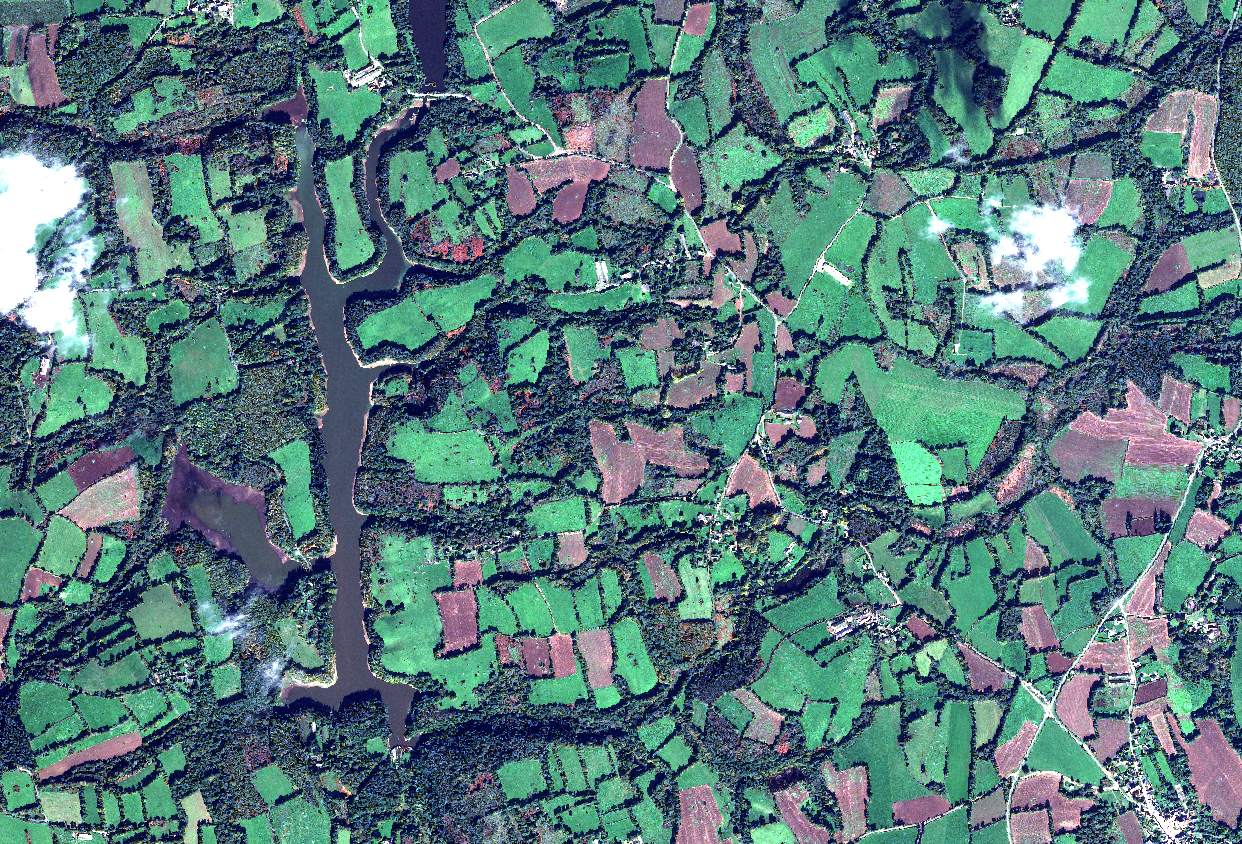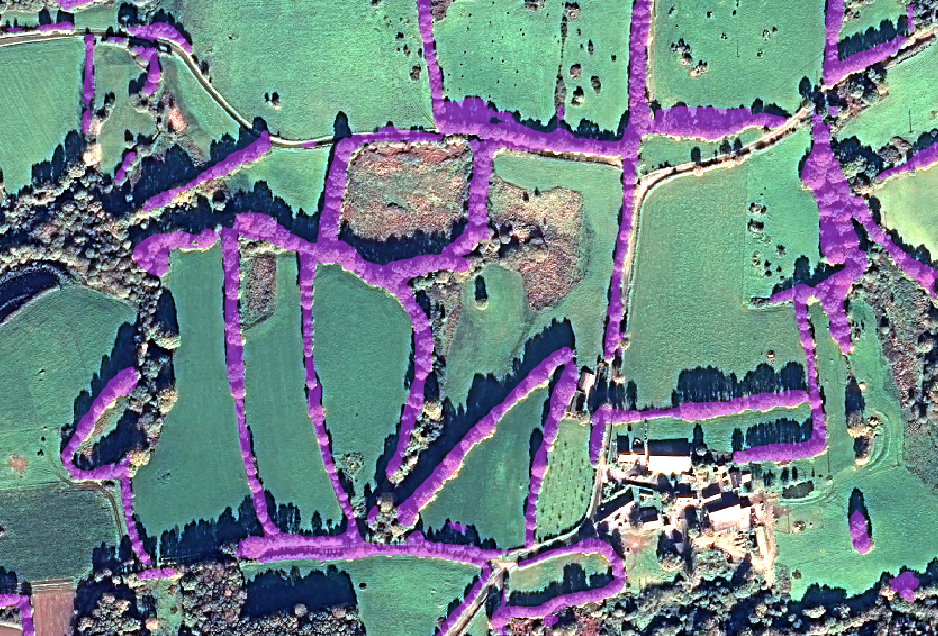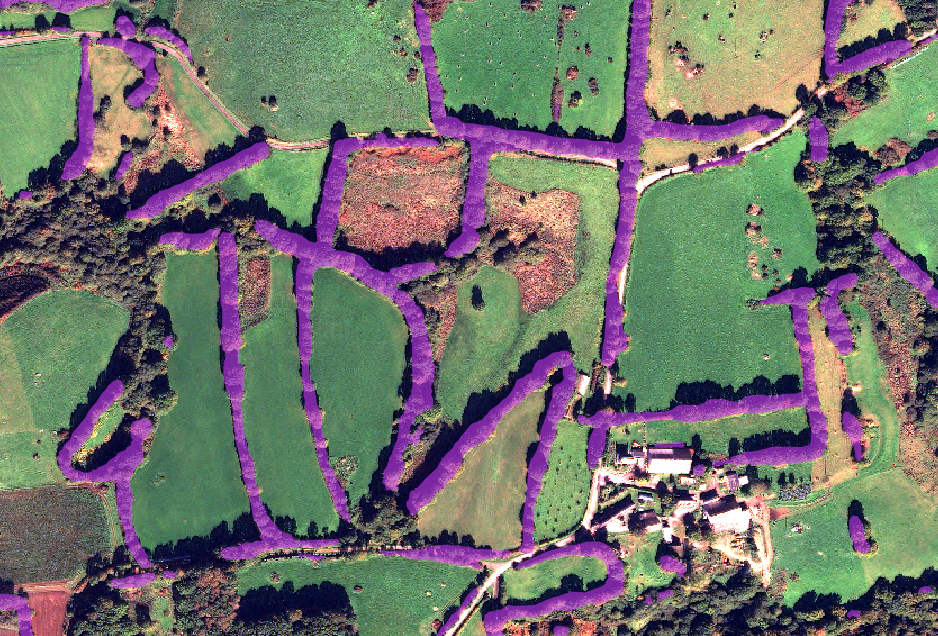
Home
Newsroom
Case Studies
Pléiades Neo
Detection of Hedges using Pléi...
Hedge detection with Airbus Pléiades satellite imagery
Hedges are excellent assets for the resilience of territories to face climate change and for the preservation of biodiversity. Yet, the area covered by hedges has significantly decreased over the past few decades due to agriculture modernization. Environmental public policies support the protection and replanting of hedges, but there is no solution available to assess their impact on large scale. EagleHedges aims to develop tools for monitoring and characterizing hedges using remote sensing.
The challenge lies in the ability to provide up-to-date data that can accurately reflect changes in hedges across territories. There is a need to refine the mapping of hedges and to monitor their evolution. Since hedges are small elements of the landscape, ranging in width from a few meters to 20 meters, it is necessary to use very high-resolution spatial imagery to detect them with precision. The objective of this work is to assess the contribution of spectral and 3D data from a pair of Pléiades Neo stereo images compared to a pair of Pléiades stereo images for the automatic detection of hedges using artificial intelligence.
Our study area is the protected perimeter of the Kerne Huel pond, which is a bocage area of approximately 18.5 km² located in Brittany, France. The Fédération Départementale des Chasseurs des Côtes-d'Armor has provided us with field surveys and data. We compared the performance of hedge detection using deep learning with Pléiades Neo stereo and Pléiades stereo respectively acquired in October and November 2022. We used the spectral bands of the sensors, pan-sharpened to a spatial resolution of 30 cm for Pléiades Neo and 50 cm for Pléiades. We also used height information from the digital surface model (DSM) calculated using the CARS software (CNES) for each pair of stereo. We trained three convolutional neural networks using the following data: Pléiades with 4 bands (blue, green, red, near-infrared) and DSM, Pléiades Neo with 4 bands and DSM, Pléiades Neo with 6 bands (4 bands + deep blue and red edge) and DSM.
The predictions were validated on areas that were not used for model training. Both sensors performed almost equivalently, Pléiades Neo with 6 bands reaching the highest accuracy score.

Figure a: Hedge detection with Pléiades

Figure b: Hedge detection with Pléiades Neo (4 bands)

Figure c: Hedge detection with Pléiades Neo (6 bands)
When considering equivalent spectral bands, Pléiades Neo allows for the detection of more hedges but with more errors compared to Pléiades. When adding the two additional bands from Pléiades Neo, more hedges are detected than when using only four bands. Overall, it can be assumed that the red edge band of Pléiades Neo helps improve hedge detection.
The advantage of Pléiades Neo over Pléiades seems to lie in its additional spectral bands (particularly the red edge band) rather than its higher spatial resolution for hedge detection. Further investigations should be made on Pléiades Neo images acquired over various landscapes.

TerraNIS is a French SME that develops and provides services in viticulture, agriculture, and land management. These services, available both in France and internationally, are based on the integration of indicators derived from satellite image processing, data from various sources (weather data, field measurements, open-source data, etc.), agronomic models, and/or artificial intelligence techniques.
TerraNIS offers Earth observation services primarily based on satellite imagery, thanks to a dual in-house skills: a strong business expertise and expertise in remote sensing.
Want to know more?
Our sales team will be happy to provide you more information about this case study and how it can meet your business needs.



